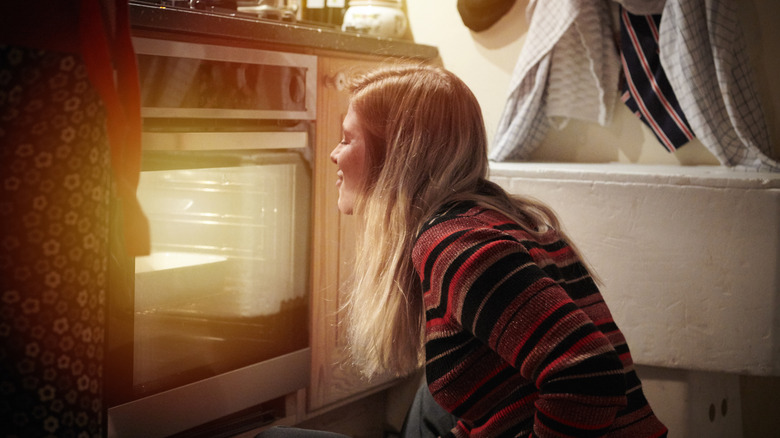Frozen Rolls Not Rising? Try One Simple Oven Hack
If you're short on time but you love fresh bread, frozen, uncooked rolls are your best friend. Rather than spending time mixing ingredients and kneading dough, all you have to do is grab a few frozen rolls out of the package, let them thaw and proof, and they're ready to bake. But just because frozen dough is easy doesn't mean it's foolproof. Sometimes frozen dough doesn't proof properly, but it's important that you don't skip this step or else you won't get light, fluffy bread. If you're having trouble proofing frozen rolls or other balls of dough, chances are you just need a little bit of gentle heat to wake up the yeast from the deep freeze. One simple oven hack to try is proofing your dough in the oven with the heat off and the interior oven light on.
Proofing is a crucial step in bread making because that's when the yeast gobbles up the sugar and starch in the dough and releases carbon dioxide, which in turn creates all of those internal pockets of air that make the bread rise. It's not hard to proof dough, but it does require a pretty narrow window of heat and humidity to get it right. You probably didn't know this, but the bulb inside your oven is capable of heating the enclosed space to as much as 100 degrees Fahrenheit, which is perfect for proofing.
How to proof rolls in the oven
Active dry yeast and instant yeast used to make bread are slightly different, but both are pretty resilient. Yeast should have no problem rising after being frozen. Unfortunately, some of it will die from the cold. As a result, frozen rolls will have a little less yeast to work with than fresh dough when the rolls come up to room temperature, so it's extra important to give them the right proofing conditions. Bread yeast needs a temperature zone of around 75 to 80 degrees Fahrenheit for proofing, and the oven bulb can provide just the right amount of heat.
To proof frozen rolls using the heat from the oven light, turn on the light and let the space heat up. It's helpful to have an oven thermometer for this job, but if you don't have one, just let the oven warm up until you can feel heat in the space when you open the door. Place the rolls on a sheet pan, cover them with a damp towel, and place the whole thing inside the oven. That's all there is to it.
Even if you make bread a lot, you really don't need a fancy proofing box. Your regular old oven works great as long as you keep the gas or electric heat off. Just be sure to set a timer so you don't over-proof, and you'll get perfect frozen dinner rolls every time.


